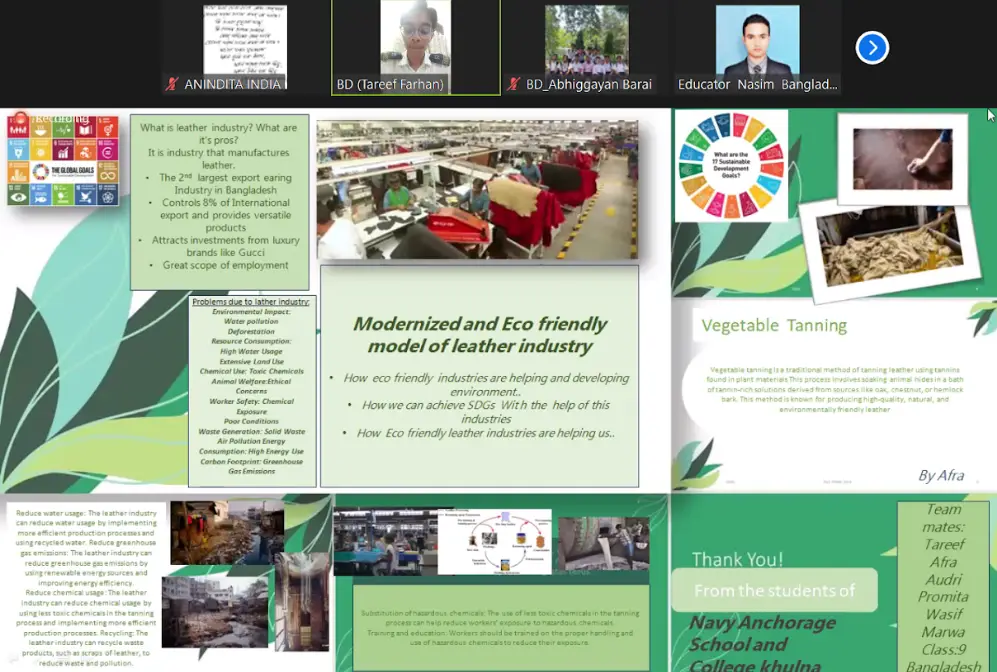On this World Teachers Day, we’re sharing stories that show how a classroom can be a window to the world. Through Class2Class.org, teachers from different countries are working together to give their students new perspectives and experiences. These educators are doing more than teaching subjects – they’re helping students understand different cultures, think about global issues, and see how they can make a positive difference.
Join us as we celebrate these inspiring teachers and the lasting impact they have on their students’ lives.
Voices from the Frontlines: Teachers Transforming Education
Let’s journey around the world and meet four inspiring educators who are at the forefront of this educational revolution:
Gisel Crespo: Promoting Inclusion in Argentina

Gisel’s journey started with a story about a girl who has a sister with Down Syndrome and Autism. As her students shared this story, something special happened. They began to really understand and care about people who face challenges in life.
But Gisel didn’t stop there. She invited adults with different conditions to speak to her class. The students listened, asked questions, and learned so much. Many were deeply moved by these real-life stories.
Inspired by what they learned, Gisel’s students became researchers and problem-solvers. They looked at their school and city to find ways to make life easier for everyone. Their ideas were simple but powerful:
- They created signs with pictures to help everyone find their way around the school.
- They put tennis balls on chair legs to make classrooms quieter and easier to move around.
- They wrote a song to teach others about including everyone.
The impact of their work spread beyond the school. Eighteen local organizations, even the city hall, started using similar inclusive practices. Gisel’s students had become agents of change to make the world more inclusive.
“Class2Class gave us a way to work with people around the world,” Gisel says. “It showed us that we can learn important life lessons while we’re learning English. My students aren’t just studying a language; they’re learning how to make the world a kinder place.”

Teacher Gisel and her class, the first group to start the “Connecting Classrooms” or “Incluite Incluí” project, are pictured in their school auditorium presenting their hard work and achievements to an invited school.
Daniel Timbal: Coding for the Environment in the Philippines

At San Pedro College in the Philippines, Daniel Timbal is teaching his students that technology can help protect our planet. His class joined a big project called “Coding for Climate,” working with a class in South Korea Bongdam High School.
It was a 3-week global collaboration experience for classrooms initiated by Take Action Global. The project introduced the fundamentals of computer science and then used problem-solving, computational thinking, creativity, and digital literacy skills to create solutions for our planet.
In Daniel’s classroom, learning to code became an exciting adventure. His students weren’t just writing computer programs; they were creating solutions to real environmental problems.
Here are examples of two of the projects:
- An Automatic Plant Watering System: This clever device uses sensors to water plants only when they need it. It could help farmers save water, especially in places where water is scarce.
- EcoLight: This smart lighting system changes based on the natural light in a room. It helps save energy by making sure lights aren’t on when they’re not needed.
What made this project special was how students worked together across countries. They shared ideas, helped each other solve problems, and learned that working together is the best way to tackle big challenges like climate change.

San Pedro College basic education students presenting their “Coding for Climate” project at the “Take Action Global” international event.
Jamila: Connecting Cultures in Tunisia

In the small village of Ainjloula, Tunisia, English teacher Jamila is bringing the world into her classroom. She has done around 15 international projects through Class2Class.org, each one showing her students new ways of thinking.
Jamila’s last year project focused on stopping bullying. After talking with students from other countries about kind and respectful schools, her class came up with two creative ideas:
- The Spin Wheel Game: They made a colorful wheel for the schoolyard. When students spin it, it suggests a kind action for them to do that day.
- Anti-Bullying Bracelets: The students made bracelets with positive messages. Wearing these reminds everyone to be kind to each other.
These ideas came from global conversations but addressed local needs. Jamila’s students took inspiration from their international friends and created solutions that work well in their own school.
“Before we started these international projects, my students saw English as just another subject,” Jamila says. “Now, they see it as a way to connect with the world. They’re more interested in class, more curious about other cultures, and more confident in themselves.”
Parents have noticed changes too. They say their children are more excited about learning and have a better understanding of the world. The school principal, seeing how well these projects work, is now more supportive of international activities.

Jamila students are creating “The Spin Wheel Game,” working in teams to write positive and kind actions aimed at spreading love and compassion throughout their school.
Anuradha Sharma: Global Learning in India

Science teacher Anuradha Sharma is showing her students that they’re part of a big, interconnected world. She has done around 76 amazing projects on Class2Class.org, each one bringing new global perspectives to her classroom.
One of her recent projects, “Protecting the Environment Through Innovation,” connected her students with peers at Navy Anchorage Khulna School in Bangladesh. This wasn’t just a chance to practice English; it was an opportunity to tackle real environmental issues together.
The project started with a virtual meeting where students from both countries talked about industries in their areas. They shared personal stories about how factories and businesses have changed their communities – in both good and challenging ways.
What made this project fun was how interactive it was. Students created online quizzes for each other about industrial impacts and environmental protection. They also worked in mixed Indian-Bangladeshi teams to come up with creative solutions to reduce pollution while keeping the economic benefits of industries.
The project did more than teach about the environment. Students improved their research skills, learned to work with people from different cultures, and became more confident in speaking English.
“According to one of my students, the session was an eye opener for them, they loved to explore more, they want to be involved in innovative sustainable project ideas for small scale industries,” Anuradha shares. “I am looking forward to the next session to have a break out room and then work together to discuss the performance of both countries on all SDGs at the international level.”

Anuradha students on a video call with students from Bangladesh, both sharing their research on the “Protecting the Environment Through Innovation” project. They present live and share their screen to showcase their work.
These teachers show us how education can connect students across cultures. Their work helps students understand the world better and prepare for life in a connected global society.
Are these stories inspiring to you? Join the Class2Class.org community today! Start your own international projects and help your students become global citizens.
Happy World Teachers Day to all educators – your work is shaping a better future for us all!


